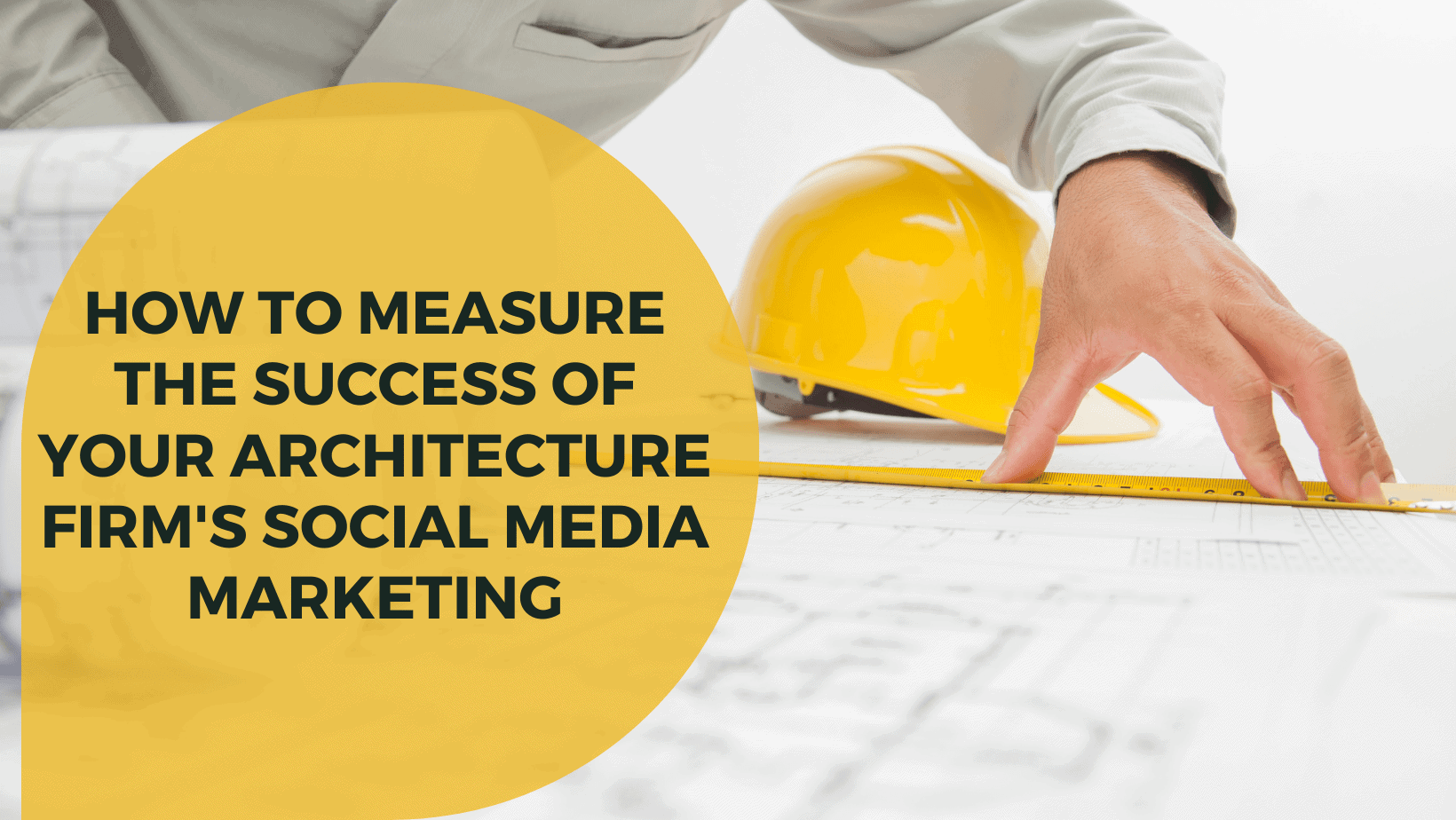There’s no denying social media’s impact on the architecture industry today. In fact, social media marketing is all they do for some businesses.
Many architectural firms rely on social media to connect with clients and expand their brand recognition, but they aren’t always sure if they’re making the most of the platform’s potential. Because of this, it is crucial to have in-depth knowledge of how your social media initiatives are doing and how to enhance them.

What Is Architecture Firm Social Media Marketing?
Competition among architecture firms is high, and numerous marketing avenues are open to them. However, if you use social media marketing correctly, you may reveal your company’s unique character to the world, win over a slew of new customers, and experience explosive growth.
Social media marketing for architectural firms makes connecting with current and future customers easier. It’s also a great opportunity for architecture businesses to network with related industries and find new clients among designers and builders.
It is not enough to simply develop a social media marketing plan for architects; the strategy’s performance must also be measured and assessed. Evaluating the outcomes is the only way to know if your efforts are paying off.
Benefits of Social Media Marketing for Architecture Firms
Social media marketing provides several benefits for architecture firms looking to establish their brand, generate leads, and engage with their audience. Here are some of the key benefits:
- Increased Brand Visibility: Social media platforms allow architecture firms to showcase their projects, expertise, and services to a broader audience. Architecture firms can increase their brand visibility and reach new prospects by regularly posting relevant and engaging content.
- Enhanced Credibility and Reputation: Social media is an excellent tool for architecture firms to demonstrate their thought leadership and expertise in the industry. Architectural firms can establish their brand as credible and reputable industry authorities by sharing their insights and opinions on industry trends.
- Improved Communication with Clients and Prospects: Social media platforms allow architecture firms to engage with clients and prospects in real time. By promptly responding to comments and messages, architecture firms can build stronger relationships with their audience and foster trust and loyalty.
- Increased Website Traffic and Lead Generation: Social media can drive traffic to an architecture firm’s website, resulting in increased lead generation. By including calls-to-action (CTAs) in their social media posts, architecture firms can encourage their audience to visit their website, sign up for their newsletter, or download their whitepapers.
- Cost-Effective Marketing Strategy: Social media marketing is a cost-effective way for architecture firms to promote their brand, generate leads, and engage with their audience. Social media marketing is more affordable and can reach a wider audience than traditional marketing methods such as print ads or billboards.
10 Most Important Social Media Metrics for Architects to Track
Success in social media architecture marketing can be gauged in various ways. Some of the most typical social media metrics are as follows:

Reach
Evaluate the efficacy of your social media marketing by counting the number of individuals who saw your posts. Examining your range of motion will do the trick. The term “reach” refers to the total number of people who saw your content during a specified time frame.
Facebook Insights and Google Analytics can be used to determine how many people saw each post. You can see how many people viewed each article and where they came from, such as direct traffic or organic search results.
The ratio of your followers to your total reach is crucial to this metric. Your work is doing well in the algorithms, being shared widely, or both; if it is being seen by many people who are not your followers.
Impressions
Tracking your impressions is a simple way to gauge the effectiveness of your social media marketing efforts. A Facebook or Instagram ad or graphic makes an impression when a user sees it. Knowing how many people view your advertising and images can help you decide what to change.
Many people have seen the post several times when impressions are much higher than reach. Examine to find out the source of the stickiness.
Audience Growth Rate
Your success in attracting new customers can be measured in part by how many new people you’ve convinced to become fans and followers of your brand.
A steadily increasing number of followers on your company’s Facebook or Twitter page is a good sign that people like what you’re doing. A drop in numbers may mean that your approach, content, or product isn’t quite hitting the mark and therefore isn’t attracting as many clients as you’d like.
Engagement Rate
You can calculate the engagement rate by dividing the number of people interacting with your content by the total number of viewers. The engagement rate is calculated by dividing all interactions (likes, shares, and comments) by impressions.
Having a high number of engaged users means that your social media marketing strategy is working well.
Video Completion Rate
Keep track of how many people really view your films in their entirety once you upload them on Facebook, Instagram, or any other site.
The video completion rate is how many individuals watched the entire or a significant portion of a video online or on a mobile device. A low completion rate indicates that viewers were not interested enough in the content to see it through. This might happen if the product is of low quality, poorly designed, or simply not appealing to the target audience.
Click-through Rate (CTR)
Your post’s click-through rate (CTR) is the fraction of audience members who actually click a link. Anything from a blog post to an internet business fits this description.
How many people noticed your social media material and clicked on it to learn more can be gauged by its click-through rate (CTR). It’s a useful gauge of the promotional efficacy of your social media material.
The click-through rate is determined by dividing the number of clicks on a post by the number of impressions. CTR is expressed as a percentage by multiplying the number by 100.
Conversion Rate
A conversion rate measures how many people who visit your website actually make a purchase. A 1% conversion rate indicates that for every 100 individuals who visited your website, 1 purchased something or filled out a form.
A high conversion rate is desirable since it shows that site visitors take the desired next step after viewing your page. A poor conversion rate is problematic since visitors cannot locate the information they need on your website.
Cost-per-Click (CPC)
This is the average cost of a click on paid social media marketing for an architect’s advertisement. One of the most crucial indicators, CPC, reveals the amount you spend for each ad click.
If your CPC is too high, then people aren’t clicking on your ad or aren’t converting into leads or sales after they click through. If this happens, it could mean that your ad copy isn’t compelling enough or that something else is going wrong with your strategy. Either way, it’s important to note this metric so you can improve upon it in future campaigns.
Social Share of Voice
This metric measures how often your architect’s firm is mentioned in conversation relative to competitors. This data can be uncovered by looking up your brand name on Google or another search engine.
You can determine your SSOV by dividing the total number of mentions for all companies in your industry by the number of times your brand has been referenced on social media platforms. Compare the frequency of words associated with your brand to that of competitors in your business or across industries with this helpful metric.
Virality Rate
Viral content can spread like wildfire, which can benefit any business. When determining a virality rate, impressions are used instead of followers to determine the significance of a share.
Remember that every time your material is shared, it reaches a new set of eyes. The exponential growth of your content’s popularity is quantified by its virality rate.
Divide the number of shares by the total number of impressions to get the virality rate of a post. To determine the virality rate as a percentage, multiply the result by 100.
Tools for Measuring Social Media Marketing Success
Architecture firms can use several tools to measure social media marketing success. Here are some popular tools:
- Google Analytics: Google Analytics is a free service that gathers data about how users interact with websites. You may learn a lot about your website’s visitors and what they do while they’re there. Everything from sales to social media shares to website activity may be tracked.
- Bulkly: Bulkly is a social media automation tool that allows marketers and entrepreneurs to schedule social media updates at scale. With Bulkly, you can create, organize, and recycle your social media updates to post automatically as often as you want. It’s a set-and-forget solution that has scheduled over 1,000,000 social media posts for marketers.
- Hootsuite: Schedule social media postings, keep tabs on social media statistics, and keep track of online conversation—all with Hootsuite, a social media management program useful for architecture companies. Metrics such as social media audience size, engagement rates, and return on investment (ROI) can be tracked and analyzed.
- Buffer: Architectural firms can use Buffer, a social media management platform that allows them to schedule updates, track statistics, and assess their social media presence. Statistics such as views, likes, shares, and comments are analyzed.
- Sprout Social: Sprout Social is a management tool that allows architecture firms to monitor conversations, schedule social media posts, and track social media metrics. It tracks follower growth, engagement, and social media ROI metrics.
- Mention: A mention is a tool for architecture firms to monitor social media conversations and mentions of their brand or product. By using this tool, you can monitor sentiment, customer feedback, and brand reputation on social media.
Importance of Measuring Social Media Marketing Success
Social media metrics are the measurements you use to understand how well your social media posts perform.
Knowing your social media objectives and the degree to which they are met will guide your content creation efforts. The more information you have regarding the performance of your architecture marketing efforts, the better prepared you will be to make adjustments. You will also be able to produce material that connects with your audience and gets people talking about your brand.
Measuring the success of your architecture firm’s social media marketing is crucial for several reasons:
- Determine ROI: Measuring the success of your social media marketing efforts allows you to determine your campaigns’ return on investment (ROI). This helps you identify which campaigns are worth continuing and which must be adjusted or discontinued.
- Identify Strengths and Weaknesses: Measuring social media metrics allows you to do just that. You can see how well your campaigns are doing by measuring relevant data like engagement rates, conversion rates, and reach.
- Improve Targeting and Messaging: Measuring your social media stats might help you better target your audience and create more effective messages. Knowing your audience allows you to tailor your messages and develop successful campaigns. The type of information that resonates with them can also be deduced.
- Keep Up With Your Competitors: Measuring your social media analytics can also help you stay ahead of the competition. Keep ahead of the competition by monitoring your rivals’ social media activity and the success of their marketing strategies. This will help your message stick in the minds of your target audience.
- Make Data-Driven Decisions: Measuring social media metrics allows you to make data-driven decisions. Using data to inform your social media strategy, you can make informed decisions based on facts rather than assumptions or guesswork.
Make your social media marketing for architecture successful by tracking your campaigns.
Best Practices for Measuring Social Media Marketing Success
To effectively measure the success of social media marketing efforts for architecture firms, it is important to follow some best practices. Here are some key best practices:
- Set Clear and Specific Marketing Goals and Objectives: Before embarking on a social media marketing campaign, it is important to set clear and specific goals and objectives that align with the overall business strategy. For example, a goal may be to increase website traffic by 20% or generate 50 new leads in a quarter.
- Choose Relevant and Meaningful Metrics to Track: Metrics should be tracked that are both significant and related to marketing goals and objectives on social media. Some KPIs include exposure and interaction, follower growth, website visits, new leads, sales, and return on investment.
- Utilize Quantitative and Qualitative Data: Combining quantitative and qualitative data is essential for a complete understanding of audience behavior and preferences. Metrics like reach and engagement are examples of quantitative data, whereas consumer feedback and surveys are examples of qualitative data.
- Regularly Monitor and Analyze Data: To identify trends and patterns, it is essential to monitor and analyze social media data regularly. This includes tracking metrics over time, remembering peak engagement times, and exploring the effectiveness of different types of content.
- Continuously Optimize Marketing Strategy: Based on data analysis insights, it is a necessity to constantly optimize social media marketing. This includes adjusting content types, posting times, and frequency to maximize engagement and achieve marketing goals.
By following these best practices, architecture firms can effectively measure the success of their social media marketing efforts and optimize their strategy for maximum impact.
Final Thoughts on an Architecture Firm’s Social Media Marketing
Architecture firms that want to stay competitive and reach their marketing goals must monitor their social media marketing campaigns. Architects can build their reputation as industry leaders by using social media to share their knowledge with the public. They can interact with their target audience, and monitor key performance indicators.
Architecture businesses may improve their marketing strategy, better understand their target audience, and prove the value of their marketing efforts to stakeholders. Following best practices and utilizing a variety of technologies accomplishes this.


